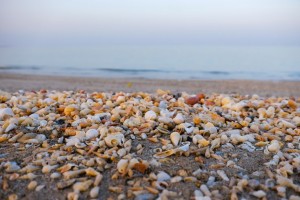
Ecological Insights into the Seashell Diversity of Fujairah, Gulf of Oman
Nestled within the Gulf of Oman, Fujairah offers a compelling study site for exploring the intricate dynamics of marine ecosystems, particularly in relation to seashell diversity. This scientific investigation delves into the ecological nuances underlying the plethora of seashell species found along the coastline of Fujairah, shedding light on their ecological significance, distribution patterns, and the broader implications for marine conservation efforts.
Fujairah's coastal areas encompass a diverse array of habitats, including coral reefs, seagrass meadows, and mangrove forests, each fostering distinct communities of marine organisms. Within these habitats, seashells serve as integral components, providing shelter, substrate, and ecological niches for a myriad of mollusk species. Through systematic surveys and taxonomic analyses, researchers have documented a rich assemblage of seashells, ranging from gastropods to bivalves, each exhibiting unique adaptations to their respective habitats.
Seashells play multifaceted roles within marine ecosystems, influencing nutrient cycling, sediment dynamics, and community interactions. The intricate structures of shells offer protection to their inhabitants, allowing them to thrive in dynamic coastal environments. Moreover, the accumulation of shells on seabeds contributes to sediment stability and habitat complexity, facilitating the colonization of other benthic organisms. As such, changes in seashell abundance and distribution can serve as valuable indicators of ecosystem health and resilience.
Several factors contribute to the observed diversity of seashells in Fujairah, including environmental gradients, hydrodynamic processes, and biological interactions. Spatial variation in habitat complexity and substrate composition often correlates with species richness and diversity, with sheltered bays and intertidal zones harboring higher abundances of seashells compared to exposed coastlines. Additionally, hydrological dynamics such as currents and upwelling events can influence larval dispersal patterns, shaping the genetic structure and connectivity of seashell populations across different spatial scales.
In conclusion, the seashell diversity of Fujairah represents a microcosm of the intricate ecological dynamics that characterize coastal marine ecosystems. By elucidating the ecological processes driving seashell diversity and understanding their functional roles within marine communities, we can inform evidence-based conservation strategies aimed at preserving the biodiversity and ecological integrity of this ecologically significant region. Through collaborative efforts and interdisciplinary research, we can ensure the long-term sustainability of Fujairah's coastal habitats and the myriad of species that call them home.
